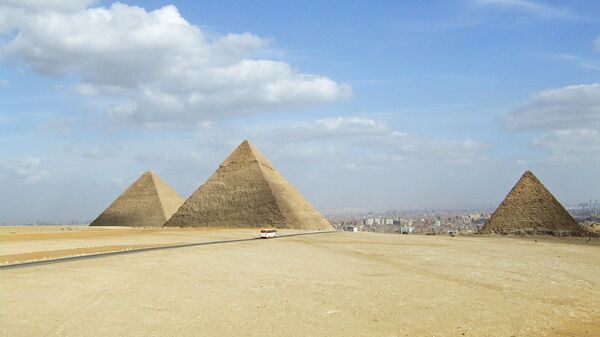The imaging method essentially allowed scientists to track particles — muons — in order to detect density changes inside large rock formations. Think x-ray, but for large, stoney structures.
According to officials, the internal structure is roughly 100 feet long and situated above a hallway measuring nearly 155 feet long known as the Grand Gallery — a passageway inside the millennia-old monument that connects the Queen's chamber to the King's chamber.
"We don't know whether this big void is horizontal or inclined; we don't know if this void is made by one structure or several successive structures," Mehdi Tayoubi, one of the researchers working on the study, said in a statement. "What we are sure about is that this big void is there, that it is impressive, that it was not expected by, as far as I know, any kind of theory."
While scientists still have several questions about what the structure could be, they have been extremely reluctant to identify the discovery as a "chamber," BBC reported. In fact, many experts have already speculated that the "void" could just be a compartment meant to relieve structural stress.
"It could be a kind of space that the builders left to protect the very narrow roof of the Grand Gallery from the weight of the pyramid," Mark Lehner, a renowned archaeologist, told the BBC. "Right now it's just a big difference; it's an anomaly. But we need more of a focus on it especially in a day and age when we can no longer go blasting our way through the pyramid with gunpowder as [British] Egyptologist Howard Vyse did in the early 1800s."
"What we are doing is trying to understand the internal structure of the pyramids and how this pyramid has been built," Helal told reporters. "Famous Egyptologists, archaeologists and architects — they have some hypotheses. And what we are doing is giving them data. It is they who have to tell us whether this is expected or not."
The findings, published in the Nature journal, are the product of a two-year study conducted by ScanPyramids, a Cairo University project to understand how the pyramids were built by using non-invasive scanning methods, and the Heritage Innovation Preservation Institute.
Helal later added that the group's intentions are not at all about finding "hidden cavities."
Built during the reign of Pharaoh Khufu, also known as Cheops, in the 26th century BC, the Great Pyramid was considered the tallest structure built by humans for thousands of years, until the Eiffel Tower was completed in 1889 AD, Reuters reported.

